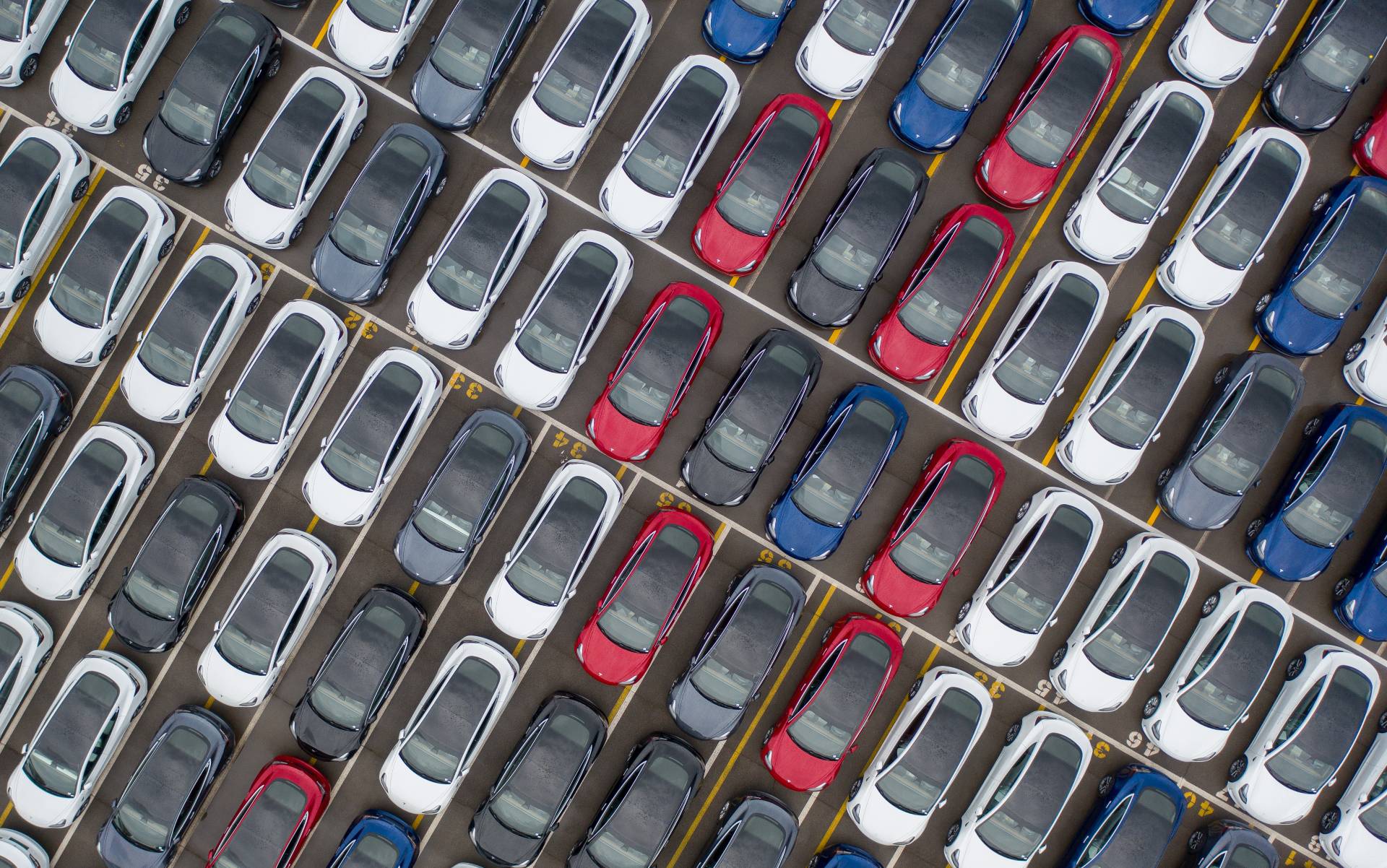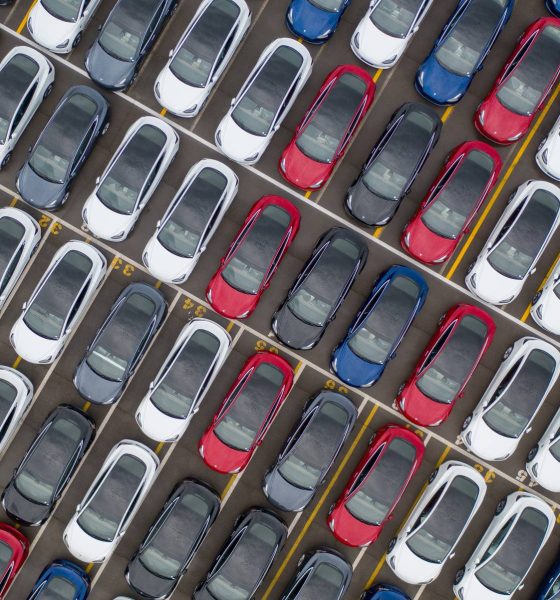Tesla says an Australian automotive industry lobby group is attempting to delay climate action by making false claims about the government’s clean car policy.
The EV maker reportedly said that the Federal Chamber of Automotive Industries (FCAI), the main auto industry lobby group in Australia, is actually attempting to increase emissions by 2030, instead of reducing them, by using a variety of falsehoods to mislead the public.
Tesla is a part of the FCAI, holding a board seat, and is an active lobby group member.
However, a report from The Guardian states that Tesla is claiming the FCAI is running a “concerted public campaign” against the government’s clean car policy by aligning with automakers who want to delay action on the climate crisis.
The FCAI has several members that have ambitious climate goals, including Ford, Volvo, Mercedes-Benz, and Jaguar Land Rover. Each of these companies have stated they will eliminate ICE production and sales in 2035.
Tesla said in a submission to the government that the FCAI’s job was to represent the views of its members, but instead, it accused the group of only aligning with those who wished to delay action against the climate crisis.
The report states that Tesla also openly discussed within the FCAI that the lobby group would not cut emissions prior to 2030.
The company also said the FCAI planned to increase vehicle emissions by 25 percent between 2024 and 2030. Before writing the submission, Tesla said the calculation was mentioned to the FCAI and asked if it had “missed anything.” The FCAI said that Tesla did not mention the review process.
According to the report, Tesla interpreted this as the FCAI was ready to allow emissions to increase by 2030. However, details could be changed down the road.
“The FCAI knew that its targets would actually allow carmakers to increase emissions because of enormous loopholes that create hundreds of thousands of electric vehicles that only exist on paper,” Tesla said in the submission, which was seen by The Guardian.
“Tesla is both a member of the FCAI and represented on its board, so it’s important that Tesla makes clear its disagreement with the submission made by the FCAI to this review, and with false claims it has made in the public discussion of vehicle standards,” the company also wrote.
The FCAI said in response to Tesla’s submission that wants to continue supporting automakers and their goals to reduce carbon emissions from vehicles.
Tesla’s submission also included several claims that the FCAI made false statements that dealt with pricing of its vehicles and had used misleading emissions figures with vehicles.
Tesla claims the FCAI said the company would reduce prices of “two popular EV models,” likely the Model 3 and Model Y, by $15,000. Tesla called this “a nonsensical claim.”
Additionally, it said it based emissions calculations that it gave various media outlets on the most polluting type of the country’s most popular vehicles:
“For example, when looking at the Ford Ranger it chose only its most polluting variant, the Raptor, which emits 262 grams of CO2 per kilometre. But the government’s Green Vehicle Guide last year listed 42 variants of Ranger, including 20 that emitted less than 200g/km.”
Tesla also said the FCAI misrepresented how a new efficiency standard would work, stating that differences in the emissions limit and how much a vehicle actually omitted would result in a raised sticker price. Instead, the penalties would not apply to cars on an individual basis. They would apply to the companies who make the cars.

Elon Musk
Elon Musk’s X will start using a Tesla-like software update strategy
The initiative seems designed to accelerate updates to the social media platform, while maintaining maximum transparency.

Elon Musk’s social media platform X will adopt a Tesla-esque approach to software updates for its algorithm.
The initiative seems designed to accelerate updates to the social media platform, while maintaining maximum transparency.
X’s updates to its updates
As per Musk in a post on X, the social media company will be making a new algorithm to determine what organic and advertising posts are recommended to users. These updates would then be repeated every four weeks.
“We will make the new 𝕏 algorithm, including all code used to determine what organic and advertising posts are recommended to users, open source in 7 days. This will be repeated every 4 weeks, with comprehensive developer notes, to help you understand what changed,” Musk wrote in his post.
The initiative somewhat mirrors Tesla’s over-the-air update model, where vehicle software is regularly refined and pushed to users with detailed release notes. This should allow users to better understand the details of X’s every update and foster a healthy feedback loop for the social media platform.
xAI and X
X, formerly Twitter, has been acquired by Elon Musk’s artificial intelligence startup, xAI last year. Since then, xAI has seen a rapid rise in valuation. Following the company’s the company’s upsized $20 billion Series E funding round, estimates now suggest that xAI is worth tens about $230 to $235 billion. That’s several times larger than Tesla when Elon Musk received his controversial 2018 CEO Performance Award.
As per xAI, the Series E funding round attracted a diverse group of investors, including Valor Equity Partners, Stepstone Group, Fidelity Management & Research Company, Qatar Investment Authority, MGX, and Baron Capital Group, among others. Strategic partners NVIDIA and Cisco Investments also continued support for building the world’s largest GPU clusters.
News
Tesla FSD Supervised wins MotorTrend’s Best Driver Assistance Award
The decision marks a notable reversal for the publication from prior years, with judges citing major real-world improvements that pushed Tesla’s latest FSD software ahead of every competing ADAS system.

Tesla’s Full Self-Driving (Supervised) system has been named the best driver-assistance technology on the market, earning top honors at the 2026 MotorTrend Best Tech Awards.
The decision marks a notable reversal for the publication from prior years, with judges citing major real-world improvements that pushed Tesla’s latest FSD software ahead of every competing ADAS system. And it wasn’t even close.
MotorTrend reverses course
MotorTrend awarded Tesla FSD (Supervised) its 2026 Best Tech Driver Assistance title after extensive testing of the latest v14 software. The publication acknowledged that it had previously criticized earlier versions of FSD for erratic behavior and near-miss incidents, ultimately favoring rivals such as GM’s Super Cruise in earlier evaluations.
According to MotorTrend, the newest iteration of FSD resolved many of those shortcomings. Testers said v14 showed far smoother behavior in complex urban scenarios, including unprotected left turns, traffic circles, emergency vehicles, and dense city streets. While the system still requires constant driver supervision, judges concluded that no other advanced driver-assistance system currently matches its breadth of capability.
Unlike rival systems that rely on combinations of cameras, radar, lidar, and mapped highways, Tesla’s FSD operates using a camera-only approach and is capable of driving on city streets, rural roads, and freeways. MotorTrend stated that pure utility, the ability to handle nearly all road types, ultimately separated FSD from competitors like Ford BlueCruise, GM Super Cruise, and BMW’s Highway Assistant.
High cost and high capability
MotorTrend also addressed FSD’s pricing, which remains significantly higher than rival systems. Tesla currently charges $8,000 for a one-time purchase or $99 per month for a subscription, compared with far lower upfront and subscription costs from other automakers. The publication noted that the premium is justified given FSD’s unmatched scope and continuous software evolution.
Safety remained a central focus of the evaluation. While testers reported collision-free operation over thousands of miles, they noted ongoing concerns around FSD’s configurable driving modes, including options that allow aggressive driving and speeds beyond posted limits. MotorTrend emphasized that, like all Level 2 systems, FSD still depends on a fully attentive human driver at all times.
Despite those caveats, the publication concluded that Tesla’s rapid software progress fundamentally reshaped the competitive landscape. For drivers seeking the most capable hands-on driver-assistance system available today, MotorTrend concluded Tesla FSD (Supervised) now stands alone at the top.
News
Elon Musk’s Grokipedia surges to 5.6M articles, almost 79% of English Wikipedia
The explosive growth marks a major milestone for the AI-powered online encyclopedia, which was launched by Elon Musk’s xAI just months ago.

Elon Musk’s Grokipedia has grown to an impressive 5,615,201 articles as of today, closing in on 79% of the English Wikipedia’s current total of 7,119,376 articles.
The explosive growth marks a major milestone for the AI-powered online encyclopedia, which was launched by Elon Musk’s xAI just months ago. Needless to say, it would only be a matter of time before Grokipedia exceeds English Wikipedia in sheer volume.
Grokipedia’s rapid growth
xAI’s vision for Grokipedia emphasizes neutrality, while Grok’s reasoning capabilities allow for fast drafting and fact-checking. When Elon Musk announced the initiative in late September 2025, he noted that Grokipedia would be an improvement to Wikipedia because it would be designed to avoid bias.
At the time, Musk noted that Grokipedia “is a necessary step towards the xAI goal of understanding the Universe.”
Grokipedia was launched in late October, and while xAI was careful to list it only as Version 0.1 at the time, the online encyclopedia immediately earned praise. Wikipedia co-founder Larry Sanger highlighted the project’s innovative approach, noting how it leverages AI to fill knowledge gaps and enable rapid updates. Netizens also observed how Grokipedia tends to present articles in a more objective manner compared to Wikipedia, which is edited by humans.
Elon Musk’s ambitious plans
With 5,615,201 total articles, Grokipedia has now grown to almost 79% of English Wikipedia’s article base. This is incredibly quick, though Grokipedia remains text-only for now. xAI, for its part, has now updated the online encyclopedia’s iteration to v0.2.
Elon Musk has shared bold ideas for Grokipedia, including sending a record of the entire knowledge base to space as part of xAI’s mission to preserve and expand human understanding. At some point, Musk stated that Grokipedia will be renamed to Encyclopedia Galactica, and it will be sent to the cosmos.
“When Grokipedia is good enough (long way to go), we will change the name to Encyclopedia Galactica. It will be an open source distillation of all knowledge, including audio, images and video. Join xAI to help build the sci-fi version of the Library of Alexandria!” Musk wrote, adding in a later post that “Copies will be etched in stone and sent to the Moon, Mars and beyond. This time, it will not be lost.”










